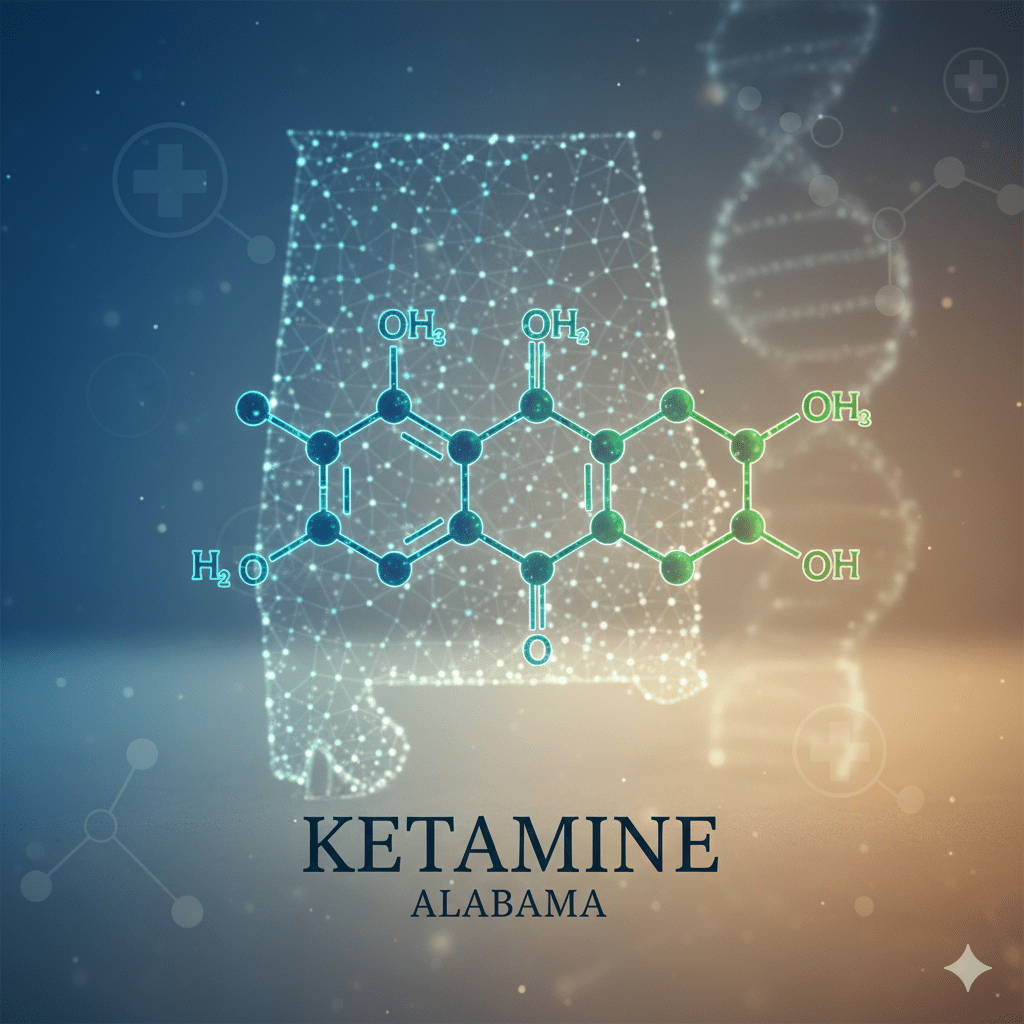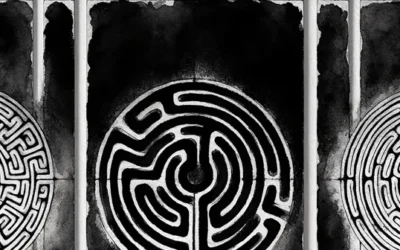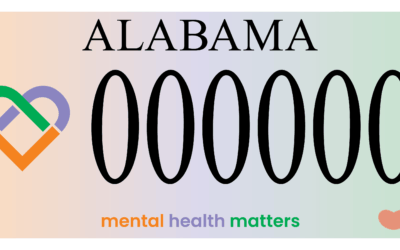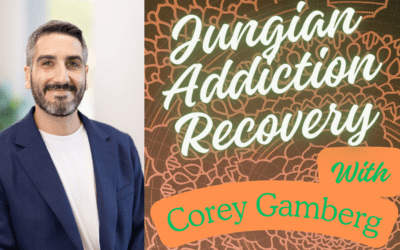I appreciate IV ketamine therapy for depression and for acute PTSD symptoms like panic attacks and traumatic re-experiencing, where rapid intervention can be life-saving. Where I don’t recommend it is for dissociative patients, because administering a dissociative drug to someone already experiencing dissociation often leads to negative experiences that aren’t therapeutic. Having seen many patients at my Hoover therapy clinic in Alabama, I’ve observed that dissociative patients tend to have particularly adverse reactions. Trauma and PTSD are notoriously slippery conditions requiring careful treatment, and often it simply takes getting to know the person to find what they respond to, whether that’s micronutrient therapy, brainspotting, EMDR, Internal Family Systems, or other approaches.
Alabama hasn’t actually banned ketamine therapy for trauma, but new clinical guidelines signal a critical shift in how we think about this powerful intervention. Many clinics that my patients used to go to like, Southern Ketamine and Wellness, have stopped delivering Ketamine. After Matthew Perry’s death exposed a largely unregulated industry, clinicians face an urgent question: When does ketamine help trauma patients, and when might it harm them?
The reality is more nuanced than headlines suggest. In Fall 2025, the Alabama Board of Medical Examiners issued new guidelines for off-label ketamine use in treating depression, and in April 2024, restricted non-physician counselors from administering ketamine without physician supervision. Ketamine therapy remains legal across Alabama, with active clinics operating in Birmingham, Huntsville, Mobile, and Auburn. Yet these developments reflect growing concerns nationwide about ketamine’s explosive growth from niche treatment to a $3.4 billion industry with insufficient oversight.
As a therapist in Hoover, I’ve witnessed ketamine’s remarkable benefits for certain patients: rapid relief from treatment-resistant depression, life-saving intervention for acute suicidal ideation, quick stabilization for some PTSD presentations. I’ve also observed deeply troubling outcomes when ketamine was administered to patients with dissociative symptoms, where the drug’s mechanism of action directly conflicts with their underlying pathology. The research and recent regulatory discussions validate what many of us see in clinical practice: ketamine is neither panacea nor poison, but a powerful tool requiring careful patient selection and comprehensive clinical integration.
Matthew Perry’s Death: The Good and Bad Lessons
On October 28, 2023, actor Matthew Perry was found face-down in his heated pool, dead at 54. The Los Angeles County Medical Examiner’s autopsy revealed a blood ketamine concentration of 3.54 micrograms per milliliter, which are levels used for general anesthesia during surgery. The report listed “acute effects of ketamine” as the primary cause of death, with drowning, coronary artery disease, and buprenorphine effects as contributing factors.
What emerged in the federal investigation shocked the medical community. Perry had been receiving legitimate ketamine infusion therapy for depression at a licensed clinic. But when clinic doctors refused to increase his dosage, he turned to an underground network. Five people were ultimately charged, including two physicians, Dr. Salvador Plasencia and Dr. Mark Chavez, who illegally supplied Perry with approximately 20 vials of ketamine for $55,000 in the month before his death. Jasveen Sangha, known as “the Ketamine Queen,” provided the fatal dose. Perry’s live-in assistant, Kenneth Iwamasa, who had no medical training, administered at least three injections the day Perry died, including a “big one” just before he entered the jacuzzi.
The case revealed a pattern of medical exploitation and regulatory failure. Text messages showed Plasencia asking Dr. Chavez, “I wonder how much this moron will pay.” Sangha had previously sold ketamine to another man, Cody McLaury, who died from overdose in 2019; she searched “can ketamine be listed as a cause of death” afterward but continued dealing. Plasencia taught Iwamasa to inject Perry despite witnessing a severe adverse reaction where Perry’s blood pressure spiked and he couldn’t move or speak. At the height of his addiction, Perry was receiving 6-8 ketamine injections per day.
There are good and bad lessons we can take from Perry’s story. One good lesson is understanding that rules are often bent by MDs who have significant leeway, and when patients have substantial money, they’re able to get away with things that shouldn’t happen. The regulatory environment allowed physicians to operate with minimal oversight, and Perry’s wealth enabled him to circumvent safety protocols when legitimate clinics refused his requests for higher doses. This reveals serious gaps in our medical oversight system.
But a bad lesson would be concluding that because Perry died, ketamine itself is bad. Let me be clear about the dosage differences: Perry was consuming 6-8 injections daily at doses reaching anesthetic levels. His blood concentration at death was 3.54 mcg/mL. To put this in perspective, therapeutic IV ketamine infusions for depression typically use 0.5 mg/kg administered over 40-60 minutes, achieving peak plasma concentrations around 0.15-0.25 mcg/mL, which is more than 10 times lower than Perry’s fatal level. A standard treatment course involves 6-8 sessions over 2-3 weeks, not 6-8 injections per day.
Saying that what Perry was given is the same as clinical ketamine therapy is like saying Tylenol should be banned because you’ll die if you eat an entire bottle. The therapeutic window matters. Acetaminophen is safe at 325-1000mg doses but fatal at 10-15 grams. Similarly, ketamine is therapeutic at subanesthetic doses but dangerous at the anesthetic levels Perry was consuming. The difference between Spravato (nasal esketamine) and IV ketamine infusions further illustrates this point: Spravato delivers 56-84mg in controlled clinical settings with mandatory 2-hour observation periods, while IV infusions provide precise weight-based dosing under continuous medical monitoring. Perry was receiving unmonitored, repeated high doses that bear no resemblance to either protocol.
Perry’s death exposed the “Wild West” of ketamine therapy. Ketamine (racemic formulation) was FDA-approved in the 1960s as an anesthetic with no restrictions on off-label use. While esketamine (Spravato) gained FDA approval in 2019 for treatment-resistant depression with strict supervised administration requirements, clinics exploit the loophole by using racemic ketamine without any FDA restrictions. Between 2017 and 2022, ketamine prescriptions increased more than 500 percent. By 2024, an estimated 500-750 ketamine clinics operated across the United States, with nearly half of all ketamine therapy now occurring at home via telehealth prescriptions.
The regulatory response has been surprisingly muted. While the FDA convened a public meeting in June 2024 to address safety concerns and the DEA increased enforcement rhetoric, no major federal or state laws have been enacted specifically in response to Perry’s death as of November 2025. The fundamental regulatory landscape, which allows widespread off-label prescribing with minimal oversight, remains largely unchanged.
Alabama’s Measured Regulatory Response
Unlike the sensationalized narrative of an outright ban, Alabama’s approach has been measured and clinically focused. The Alabama Board of Medical Examiners published “Guidelines for the Off-Label Use of Ketamine for the Treatment of Treatment-Resistant Depression in Outpatient Settings” in Fall 2025. These guidelines provide practice standards for physicians rather than prohibitive regulations, though the full text has not been made publicly available on the board’s website.
More significantly, on April 30, 2024, the Alabama Board of Examiners in Counseling clarified scope-of-practice boundaries. The board announced that ketamine-assisted therapy by counselors without a physician present falls under the jurisdiction of the Alabama Board of Medical Examiners and could constitute unauthorized practice of medicine. This means non-physician counselors cannot independently administer ketamine, but it does not restrict physicians, anesthesiologists, or other medical professionals from providing ketamine therapy. Complaints about counselors violating this policy will be forwarded to the medical board, with potential civil and criminal charges under Alabama Code §§ 34-24-50; 34-24-51.
These regulatory moves reflect legitimate clinical concerns rather than reactive prohibition. Ketamine remains a Schedule III controlled substance requiring DEA registration and Alabama Controlled Substances Certificate. Licensed healthcare providers may continue administering ketamine for therapeutic purposes, including off-label use for depression, PTSD, anxiety, and chronic pain under appropriate physician supervision.
The Alabama context matters for clinicians nationwide. Rather than representing a retreat from innovative treatment, Alabama’s guidelines signal recognition that ketamine requires the same rigorous clinical framework we apply to other powerful interventions: thorough evaluation, appropriate patient selection, supervised administration, and integration with comprehensive mental health care.
Why Dissociative Patients Get Worse: Clinical Observations from Taproot
What I see at Taproot Therapy Collective is that many patients who become worse after ketamine treatment present to therapy in crisis, saying they can no longer contain the symptoms that ketamine set off, and these are invariably dissociative patients. It makes sense to me that we don’t give stimulants to anxious people, we don’t give depressants like alcohol or Xanax to depressed patients, and we shouldn’t give dissociative drugs to dissociative patients.
I’ve often had clinicians ask me how I arrive at this conclusion and what research justifies it. The answer is: not much research yet. However, it seems self-evident to me that we should listen to the realities of our patients, and it also seems self-evident that something that increases a symptom that a patient is trying to reduce is probably not a good drug to treat that symptom.
The mechanistic basis for ketamine’s psychiatric effects explains why it poses specific risks for patients with dissociative symptoms. Ketamine was originally termed a “dissociative anesthetic” in the 1960s by Ed Domino, who described patients as “disconnected from their environment somehow.” This dissociation is not an unfortunate side effect but the primary mechanism through which ketamine exerts its effects.
Ketamine produces dissociation through N-methyl-D-aspartate (NMDA) receptor antagonism. It blocks NMDA receptors preferentially on GABAergic inhibitory interneurons, leading to disinhibition of pyramidal neurons and a “glutamate surge” that affects the prefrontal cortex and limbic system. A 2020 Nature Communications study identified specific brain rhythms associated with ketamine-induced dissociation. Research has demonstrated that low-dose ketamine administration clinically mimics depersonalization disorder both symptomatically and on neuroimaging.
Dissociation is kind of like riding a bike: once the brain knows how to do it, it always has that ability. Many patients with dissociative disorders often report that they first time they dissociated was during a drug trip gone wrong, and the symptom persisted after the trip. However, we can treat trauma and we can teach tips to help patients recognize and regulate the emotional slippery slope that leads into dissociative episodes so that they can be better managed. Ketamine is probably not the best way to do this.
For patients who already experience pathological dissociation, whether from dissociative identity disorder, depersonalization/derealization disorder, or significant dissociative symptoms in the context of complex PTSD, ketamine’s mechanism of action directly overlaps with their symptom presentation. This creates multiple potential problems: exacerbation of existing dissociative symptoms, increased distress due to similarity to baseline pathological dissociation, triggering of dissociative episodes, and difficulty distinguishing ketamine effects from worsening of the underlying condition.
Clinical guidelines support caution or contraindication. The consensus guidelines state that clinicians should exclude or limit ketamine use in patients with poorly controlled psychiatric conditions. The guidelines note that subdissociative dose ketamine causes transient psychoperceptual symptoms in all patients but may be more pronounced and distressing to patients with certain psychiatric histories.
Additionally, I’ve seen patients who had profound and complex trauma participate in research trials at major hospitals where they were given ketamine. These patients often white-knuckled it through life but had complex PTSD and had never had a safe environment even in childhood or infancy. The ketamine infusions were not provided with therapy or with a stabilizing or preparatory environment to help them anticipate and integrate the traumatic contents that might come up.
We have to remember that a lot of these research studies and a lot of these clinics are simply administering ketamine under fluorescent lights while someone’s alone in a room, maybe listening to music or playing with a sensory object or phone, but not really anything that could help them therapeutically integrate the material that’s coming up. What’s more upsetting is that oftentimes when these patients reported that they got worse with ketamine, doctors would try two or three more times, and if they continued to decompensate, they would kick them out of the study without support.
It seems like it should be part of the process that additional options were offered to members of these studies to help integrate material coming up, instead of just saying “well, if the drug’s not working, if it’s making you worse, then we’re going to pull the plug.” It stands to reason that when these drugs do unlock traumatic experiences and somatic trauma to be dealt with, patients probably need supportive services to help them integrate and understand the parts of self that are emerging. It’s strange to me that this isn’t considered by some of the top researchers in the nation.
In my clinical practice, I’ve observed patients with dissociative presentations become significantly destabilized following ketamine treatment obtained elsewhere. One patient with complex PTSD and moderate dissociative symptoms experienced a marked increase in dissociative episodes lasting several weeks following a single ketamine infusion. Another patient with undiagnosed DPDR found the ketamine experience so distressing and disorienting that it triggered a prolonged worsening of baseline symptoms and required intensive therapeutic intervention to restabilize. These clinical observations align with the mechanistic understanding: for patients whose core pathology involves dissociation, administering a dissociative agent is contraindicated.
The Research Evidence: What It Shows and What It Misses
The evidence supporting ketamine for specific psychiatric conditions is substantial and continues to grow. For clinicians considering ketamine, understanding this research base is essential for informed patient selection, but we also need to understand what research doesn’t capture.
Treatment-resistant depression represents ketamine’s strongest indication. A 2013 randomized controlled trial found 64% of treatment-resistant depression patients responded to ketamine versus 28% for placebo within 24 hours. Six repeated infusions produced a 59% response rate with sustained improvements through maintenance dosing. Real-world data from 2,665 patients showed 45% response and 30% remission rates.
For suicidality, ketamine offers life-saving rapid intervention. Ketamine reduced suicidal ideation 55% versus 30% for placebo, with effects persisting up to six weeks.
PTSD research shows promising but more limited evidence. A single ketamine infusion produced significant PTSD symptom reduction at 24 hours. Six infusions achieved 67% response rate versus 20% for placebo, with median response duration of 27.5 days. Meta-analysis confirmed improvements at 24 hours and 1-4 weeks.
Anxiety disorders showed fast-acting effects persisting up to one week.
The Limitations of Quantitative Research and Why Clinical Experience Matters
I’ve written on my blog many times about some of the limitations of quantitative research. For example, I was an EMDR clinician for a very long time. It was the best tool that I had at the time. Even though EMDR has some risks and doesn’t work for most patients, it does work miracles for a small population. When I encountered brainspotting, I felt it had all of the strengths of EMDR and none of the weaknesses, and it often took patients deeper through one issue at a time instead of activating multiple issues simultaneously to be wrestled and recompartmentalized.
There’s a strong argument to be made that brainspotting is one of the fastest growing modalities in the world. Having networked with many people through my blog and podcast, and having met many providers at different conferences and trainings, I’ve met zero providers to date who were brainspotting providers that, once they encountered EMDR, switched to EMDR as their primary modality. However, more than half of all of the brainspotting providers that I met were previously EMDR providers who realized that brainspotting was more effective.
One of the things that we have to keep in mind about research is that it moves incredibly slowly. EMDR has been around for almost 50 years at this point. A lot of times by the time there’s a consensus about randomized controlled trials and meta-analyses, the discoveries are already out of date! EMDR is now considered best practice by evidence-based standards, but it also is no longer the best tool that we have.
We should be able to listen to trauma patients when they say that something works, and we should be able to learn from the clinical intuition of our peers even if research has not caught up to it. Research is always going to be behind. Usually providers who are social workers and LPCs that are not top earners prioritize trainings because they feel that they’re effective, and there’s a basis of evidence there. Additionally, many trauma patients have tried multiple modalities and will tell providers what worked for them and what didn’t.
Comparing Established Trauma Therapies: EMDR, Brainspotting, and IFS
Understanding ketamine’s place in the trauma treatment landscape requires examining the evidence base for alternative interventions. The VA/DoD Clinical Practice Guideline (2023) strongly recommends three psychotherapy approaches as first-line treatments for PTSD: Prolonged Exposure (PE), Cognitive Processing Therapy (CPT), and Eye Movement Desensitization and Reprocessing (EMDR). Notably, all three psychotherapies are preferred over medications.
EMDR carries the strongest evidence base across international guidelines. More than 35 randomized controlled trials support EMDR’s efficacy, with 77-100% of trauma victims losing their PTSD diagnosis after 6-12 sessions. Meta-analyses show strong treatment effects for PTSD and depression reduction. The World Health Organization notes that “unlike CBT with a trauma focus, EMDR does not involve detailed descriptions of the event, direct challenging of beliefs, extended exposure, or homework,” making it more tolerable for some patients.
Treatment efficiency studies are impressive. A Kaiser Permanente study found that 100% of single-trauma victims and 77% of multiple-trauma victims no longer had PTSD after a mean of six sessions, and 77% of combat veterans were PTSD-free after 12 sessions. The typical EMDR protocol involves 12-16 weekly 60-90 minute sessions over approximately three months. Some studies show EMDR working more rapidly than traditional CBT, generally with lower dropout rates. Beyond PTSD, EMDR demonstrates effectiveness for complex PTSD, childhood trauma, depression and anxiety, chronic pain, substance use disorders, and other trauma-related presentations.
Brainspotting represents an emerging modality with limited but promising evidence. Developed in 2003 by David Grand, Brainspotting has far less research support than EMDR but shows potential in comparative studies. Studies comparing EMDR and Brainspotting found both produced significant PTSD symptom reductions, with Brainspotting achieving comparable results in fewer sessions. Pilot data suggests three Brainspotting sessions may be as effective as 8-12 EMDR sessions, potentially offering better tolerability and easier learning curve for therapists.
However, the modality has been criticized for lack of empirical validation, small sample sizes, and need for more rigorous independent research. What’s significant is the clinical experience of practitioners: as I mentioned, I’ve never met a brainspotting practitioner who switched back to EMDR, while more than half of brainspotting providers I know were previously EMDR-trained and found brainspotting more effective.
Internal Family Systems (IFS) shows extremely promising pilot data requiring replication. A 2021 pilot study found extraordinarily large effect sizes after 16 sessions of IFS therapy for PTSD. A 2024 online group IFS study reported 53% achieved significant PTSD reduction.
However, a lot of researchers hate subjective modalities and somatic medicine for trauma because it is subjective and not able to be reduced down to a number like cognitive and behavioral therapy. Yet a lot of the subjective experience of therapy, which is a subjective process, can’t really be reduced down to objective variables or formulized, manualized approaches either.
What research may be missing with IFS is that there are lots of helpful things that ketamine could assist with that need to be handled relationally in psychotherapy. For example, IFS works by helping a patient develop powerful metacognition to observe parts of self that may be destructive, harmful, or obsessive without being possessed by them. It lets somebody break themselves into multiple parts in order to understand themselves better and approach parts of themselves that they may not relate to.
Many people repress or deny parts of themselves and their emotional experience, including what they say and do if those things contradict their self-image. However, we have to look at places where our behavior and our emotions and what we say does not reflect who we think we are. That’s sort of what therapy is broadly, and by breaking the self into parts, IFS allows patients to move outside of the window of tolerance of what they’re able to tolerate to expand their emotional resilience. This is another thing that is simply self-evident to me.
IFS has been criticized for a “strikingly small evidence base” despite its 30-year history. The Society for the Advancement of Psychotherapy notes IFS has “problematic popularity” that exceeds research support. Importantly, IFS is not recommended for schizophrenia, dissociative identity disorder, or borderline personality disorder in some contexts, as the focus on sub-personalities could exacerbate dissociation, similar to the concerns with ketamine.
Micronutrient therapy offers adjunctive support with growing evidence. A systematic review of 23 studies found 16 showed positive effects for anxiety, depression, or stress. Post-trauma applications show particular promise. Following earthquakes, 65% of micronutrient users dropped below PTSD threshold versus 19% of controls. Micronutrients support brain metabolism, mitochondrial function, genetic expression, and neurotransmitter production while providing anti-inflammatory effects. They are not first-line for acute psychiatric conditions but offer valuable adjunctive support with minimal side effects.
The Integration Question: Ketamine Without Therapy
No head-to-head randomized controlled trials directly compare ketamine to EMDR or other psychotherapies for PTSD. This evidence gap is significant. What has emerged instead is a growing clinical practice of combining ketamine with EMDR, based on the theory that ketamine’s promotion of neuroplasticity during the 7-10 day window post-administration may facilitate deeper reprocessing during EMDR, while the dissociative state potentially helps access difficult memories with less distress. Clinicians report that clients who were “stuck” in EMDR alone sometimes achieve breakthroughs with the combined approach. However, this remains clinical observation rather than rigorously tested protocol.
Some clinics are exploring ketamine-assisted psychotherapy protocols where therapy is provided during the integration window, but Many ketamine clinics operate without any therapeutic component, just drug administration under fluorescent lights, maybe with some music. This represents a fundamental misunderstanding of trauma treatment.
Clinical Decision Framework: Beyond Binary Thinking
We should consider ketamine, neuromodulation, micronutrition, and many of these emerging supportive elements of recovery as parts of holistic recovery, not simply “if this then that,” “did they work or do they not” approaches to heal trauma, because that’s not really how the brain works.
The evidence is clear: ketamine offers rapid, meaningful relief for specific presentations including treatment-resistant depression with response rates of 45-67%, acute suicidality with 55-67% reduction at baseline, and some PTSD cases with 67% response rate with repeated infusions. These are potentially life-saving interventions when integrated into comprehensive care with appropriate supervision.
The evidence is equally clear that ketamine poses risks for vulnerable populations, particularly those with dissociative symptoms, substance use disorders, or inadequate clinical support. When we administer a dissociative agent to patients whose core pathology involves dissociation, we are working against their healing rather than supporting it.
Ketamine should be considered for:
- Severe treatment-resistant depression after multiple SSRI/SNRI trials
- Acute suicidal ideation requiring rapid intervention
- Some presentations of acute PTSD where quick stabilization can bridge to trauma-focused psychotherapy
But even when appropriate, critical conditions must be met: comprehensive psychiatric evaluation, medical clearance, supervised administration in proper clinical setting, integration with ongoing psychotherapy, absence of substance use disorder history, absence of dissociative presentations, and comprehensive mental health team providing coordinated care.
Other modalities should be strongly preferred for:
- Complex trauma and childhood abuse presentations requiring phase-oriented treatment
- Any dissociative presentations (clear contraindication)
- Active substance use disorder
- Patients preferring non-pharmacological approaches
- Settings without adequate clinical infrastructure
The Path Forward: Empiricism Begins in the Therapy Room
There are limitations to quantitative research and there are also limitations to how fast qualitative research can move, just because of the lengthy nature of the research process. We have to be empirical, but we also have to honor that the process of empiricism begins in the therapy room.
The current moment in ketamine therapy represents both opportunity and warning. Matthew Perry’s death exposed serious regulatory gaps and exploitative practices in a rapidly expanding industry. Alabama’s measured regulatory response through guidelines rather than prohibition suggests a path forward that preserves access while ensuring appropriate clinical standards.
As clinicians, we must resist both the hype cycle that presents ketamine as psychiatric panacea and the reactive prohibition that would eliminate access for patients who genuinely benefit. The process of healing from trauma is finding a set of tools and a new way of being, and that’s going to be more than one intervention. It’s going to be multiple interventions that support recovery. All of these things are elements to a healthy life, but not a simple variable like “If I do X, am I all of a sudden better and is my PTSD gone?”
I tell patients often that if I could redesign the brain, I would make it work differently, or maybe one simple change or tweak or intervention would all of a sudden show complete healing, but that just isn’t how we work. We have to understand all of us and our unique needs.
The proliferation of at-home ketamine via telehealth represents a dangerous deviation from evidence-based practice. Nearly half of all ketamine therapy now occurs at home, often prescribed after brief video consultations by clinics with no psychiatrists on staff. Yale’s Dr. Gerard Sanacora put it plainly: “Ketamine treatment needs to be integrated into a comprehensive mental health care plan. This is not a standalone treatment.”
For trauma specifically, ketamine occupies a narrow niche rather than displacing established interventions. EMDR, Prolonged Exposure, and Cognitive Processing Therapy carry the strongest evidence base with decades of research, proven long-term effectiveness, and absence of abuse potential. These psychotherapies should remain first-line treatments for PTSD. Ketamine may serve as adjunctive intervention for specific presentations, particularly when rapid stabilization is needed to engage with trauma-focused therapy, but only with appropriate safeguards and clear clinical rationale.
The dissociative patient population requires particular vigilance. My clinical observations of destabilization following ketamine treatment in dissociative patients are not isolated anecdotes but predictable outcomes based on ketamine’s mechanism of action. The near-complete absence of research specifically examining ketamine in dissociative disorder populations is not reassuring; it is a red flag. Until we have safety data demonstrating otherwise, clinical wisdom and mechanistic understanding support contraindication.
Alabama’s response, and the national conversation sparked by Matthew Perry’s death, point toward a middle path: preserving access to ketamine for patients who genuinely benefit while establishing proper clinical standards, requiring comprehensive evaluation, ensuring supervised administration, integrating with psychotherapy, and protecting vulnerable populations from harm. This is not restriction for restriction’s sake but clinical responsibility in service of patient safety.
As we move forward, we need to listen to our patients, honor clinical intuition alongside research evidence, and remember that healing from trauma is never about a single intervention. It’s about finding the right combination of approaches for each unique individual. Sometimes that includes ketamine. Often it doesn’t. Always it requires careful clinical judgment, comprehensive support, and respect for the complex reality of trauma recovery.


























0 Comments